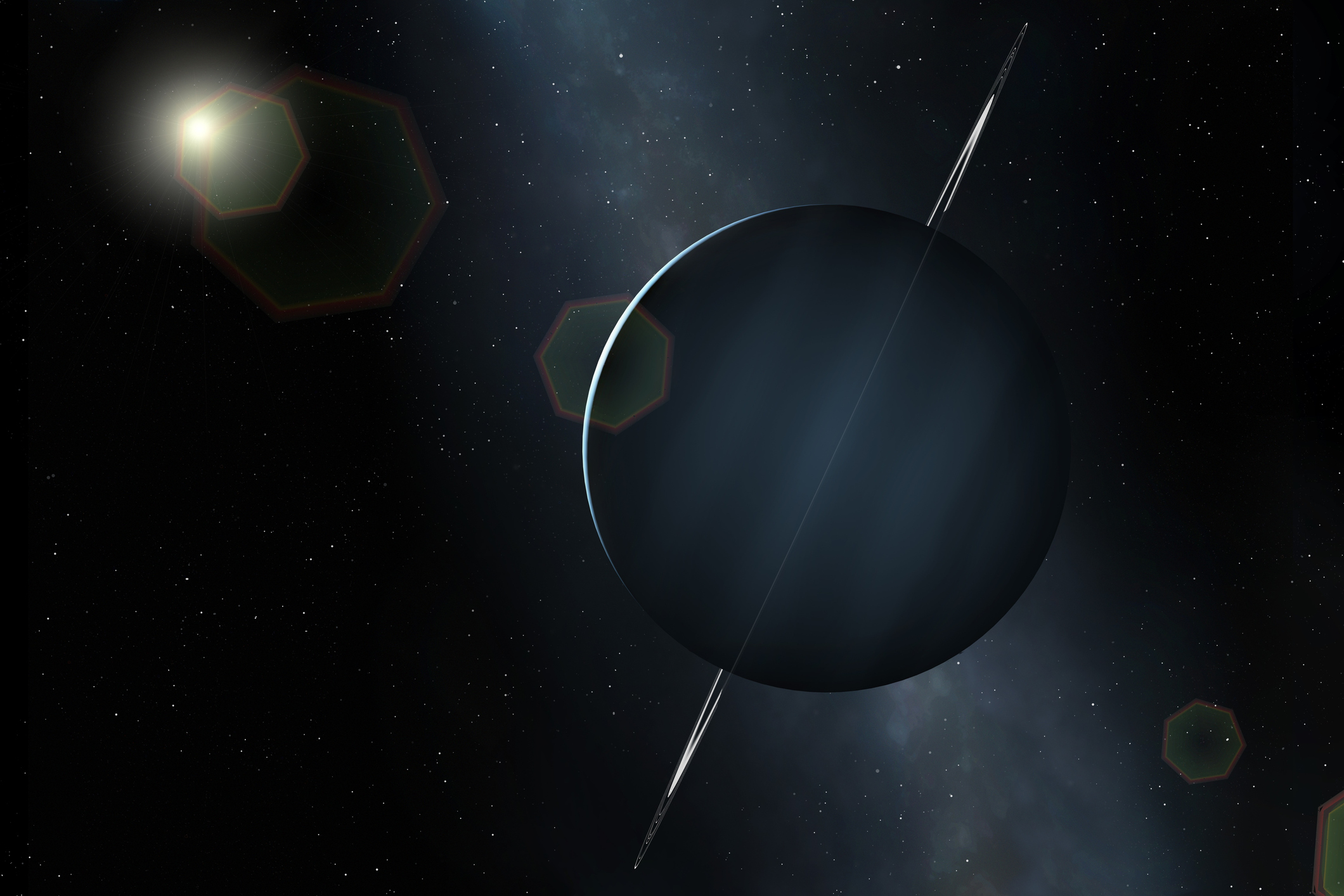
An impression of the green ice giant planet, Uranus. It is unusual in that it has a very pale, almost featureless atmosphere, and an axial tilt close to 100 degrees.
Getty Images/Science Photo Libra—Science Photo Library
Uranus is one of the least explored planets in the solar system, with just a single barnstorming visit by Voyager 2 in 1986. If ever there was a world that deserves more attention than that, however, Uranus is it, if only because it is such a cosmic odd-ball.
Easily Uranus’ strangest feature is the fact that it orbits on its side, lying at a 98-degree angle, with its North and South poles facing effectively East and West. Astronomers have always attributed the planet’s peculiar posture to a long-ago collision with a large passing body. But as Space.com reports, a new paper accepted for publication in the journal Astronomy and Astrophysics, and posted to the preprint site arXiv.org, offers a new and different theory.
A lingering problem with the giant impact explanation for Uranus’ angle is that the entire early solar system was a shooting gallery of whizzing planets and moons which should have knocked other planets similarly cockeyed. And yet, Uranus alone orbits sideways.
According to the new paper, it wasn’t an impact that tipped Uranus at all. Rather, it argues, a massive moon fell into orbit around the planet and gravitationally destabilized it. Using computer models, the researchers calculate that over time, the moon would have tilted Uranus to an angle of 80 degrees. At this point, the planet-moon pair would have entered a chaotic gravitational dance, pulling Uranus even further sideways and ending with the moon crashing into the planet, vanishing from history and freezing Uranus at its current 98-degree angle.
The theory is a sound one, at least as far as computer models can prove, and it could get a further test sometime after 2030. That’s when China plans to launch its Tianwen-4 spacecraft, which will make twin flybys first of Jupiter and then of Uranus, at last giving the sideways planet another up-close look.
This story originally appeared in TIME Space, our weekly newsletter covering all things space. You can sign up here.
Write to Jeffrey Kluger at jeffrey.kluger@time.com.


